Hawks and eagles are one of the more than 200 distinct species of the Accipitridae family, which includes quick, muscular raptors that typically hunt other creatures for sustenance and are diurnal or active throughout the day.
Hawks are classified as either enormous, broad-winged buteos, usually known as “soaring hawks,” which dwell in the wide territory such as grasslands, or accipiters, which are tiny and reside within forests.
Hawks are relatively small as compared to eagles however bigger than falcons. Like some of the other raptors, female hawks are bigger than males, unlike many other birds.
Here are 14 different types of hawks in the world.
| Image | Name |
|---|---|
 | The Red-Tailed Hawk |
 | Sharp-Shinned Hawk |
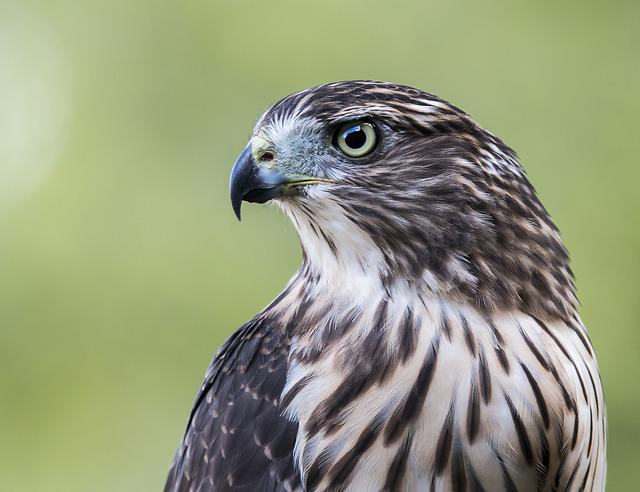 | Cooper's Hawk |
 | Rough-legged Hawk |
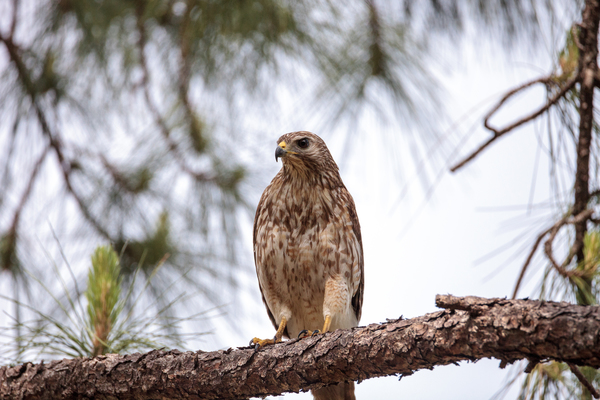 | Red-Shouldered Hawk |
 | Ferruginous Hawk |
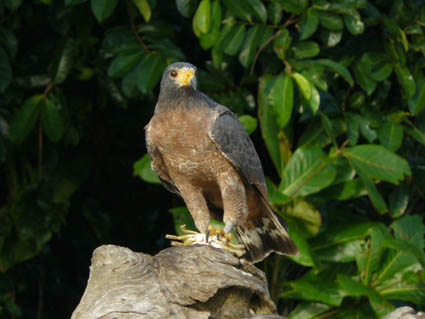 | Rufous Crab Hawk |
 | Northern Goshawk |
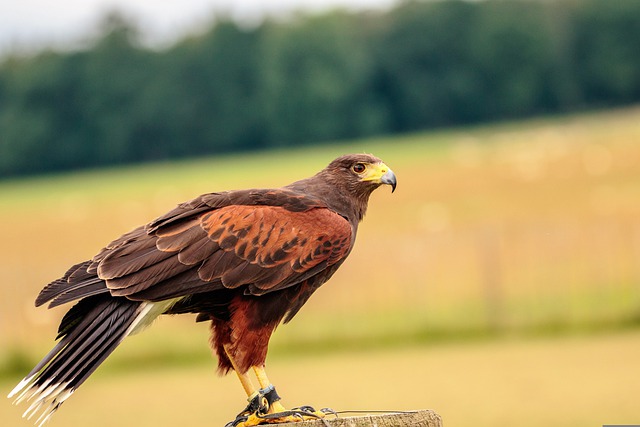 | Harris's Hawk |
 | African Harrier Hawk |
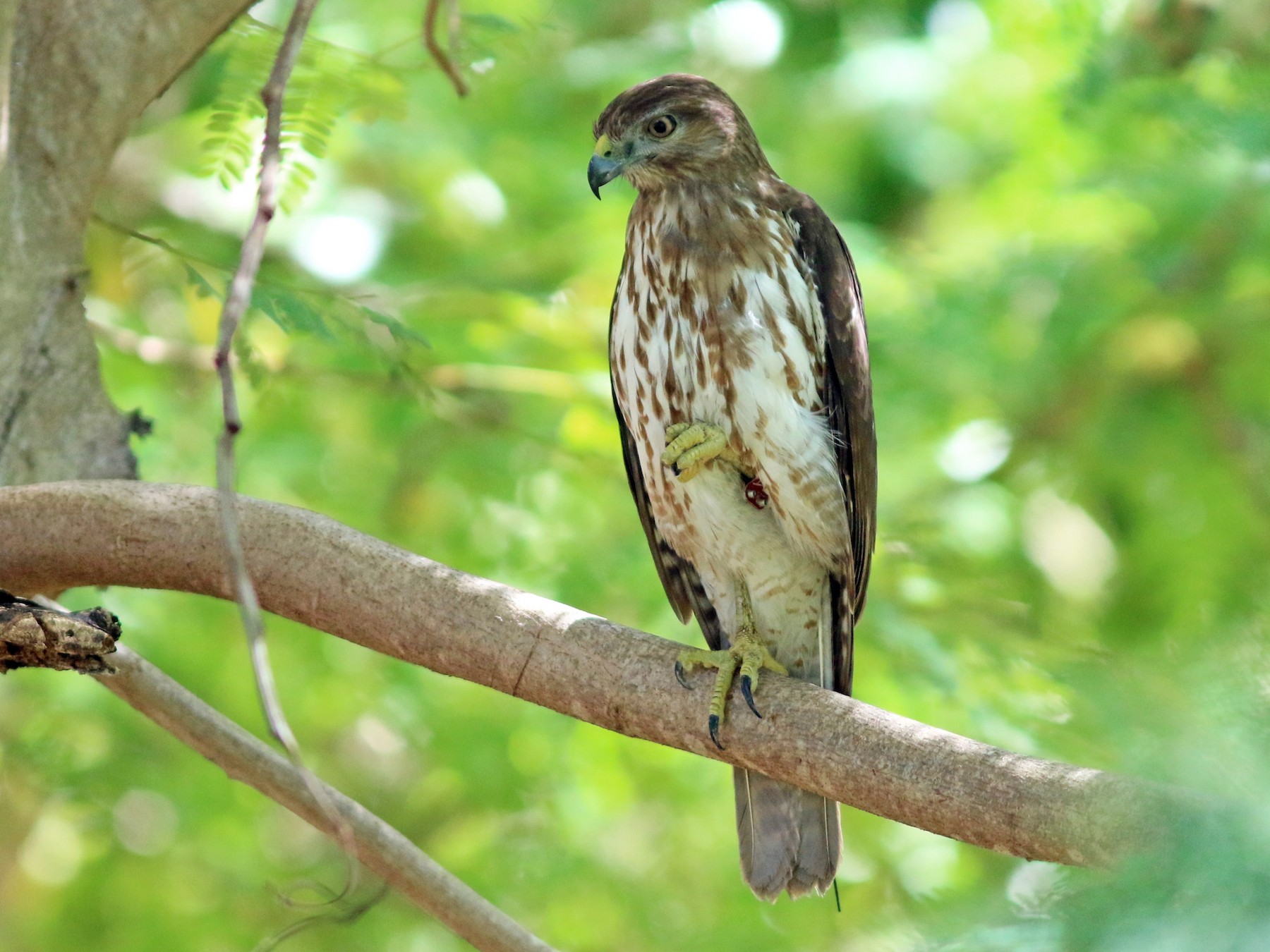 | Ridgway's Hawk |
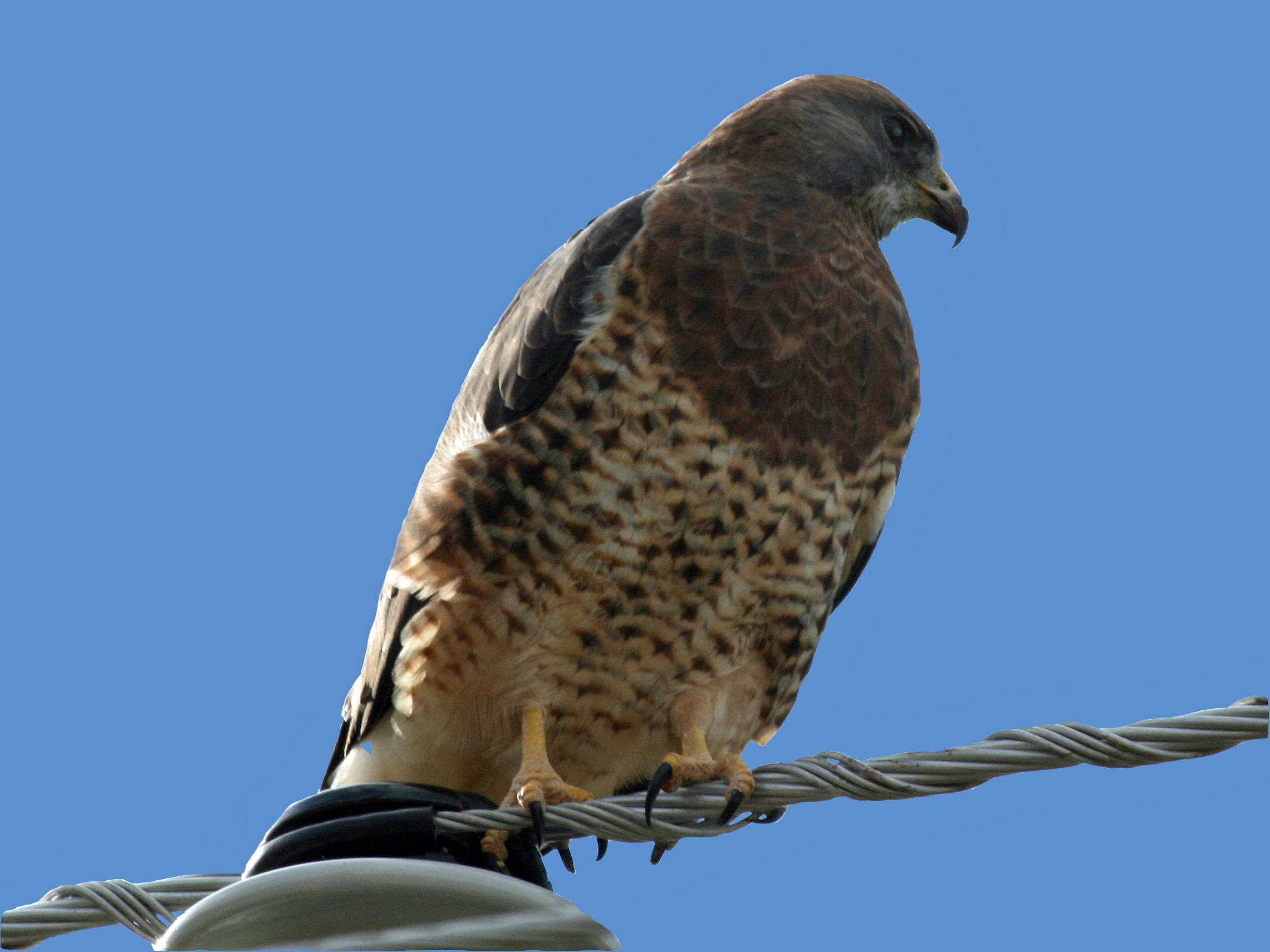 | Swainson's Hawk |
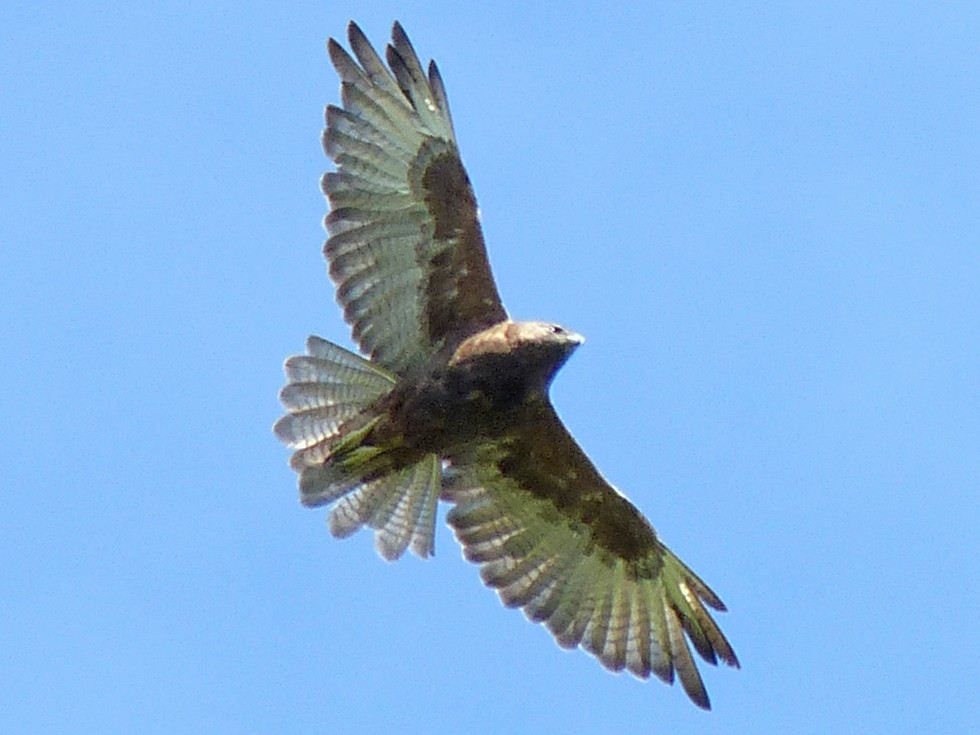 | Hawaiian Hawk |
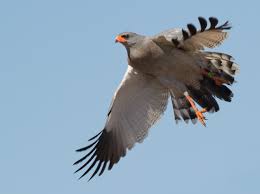 | Pale Chanting Goshawk |
Different Types of Hawks in the World
1. Red-Tailed Hawk

The red-tailed hawk (Buteo jamaicensis) is by far the most prevalent hawk throughout North America, known for its characteristic rust-colored tail.
The red-tail enjoys open land and searches for high perches, such as highway poles, to keep an eye out for food. It prefers tiny rodents but will also consume bats, frogs, insects, rabbits, snakes, squirrels, and other birds.
Both hawks might surround each other during breeding season as the male executes magnificent dives, sometimes transferring prey to the female during mid-flight.
During the spring mating season, partners make nests among tall trees and rock ledges, as well as on tall structures across urban areas.
Where to Find this Hawk?
- Central America, Mexico, the Caribbean, and the lower 48 United States are exposed yearly.
- Spring: They might be seen in Alaska and Canada during the mating season.
2. Sharp-Shinned Hawk

Sharp-shinned hawks (Accipiter striatus) are often the tiniest bird-eating accipiters across America, with a habitat that extends from South and Central America towards northern Argentina.
Although these rapid, agile wood predators eat insects and rodents. Their primary diet consists of tiny birds, which usually pluck prior to eating.
Sharp-shinned hawks hunt for food around bird feeders as well as other sites where birds gather. Adults possess gray-blue heads, backs, and wings, with rust-and-white mottled undersides.
Where to Find this Hawk?
- Year-round: Usually migratory, several stay year-round inhabitants of the Intermountain West, Pacific Northwest, Upper Midwest, Appalachia, Mexico, and Northeast.
- Spring/Summer: Alaska, the lower 48 states, Canada, and Mexico.
- Winter in the southern United States, South, and Central America, Mexico, and the Caribbean.
3. Cooper’s Hawk

Cooper’s hawk (Accipiter cooperii) is distinguished by amber-colored eyes, a black tail, grey wings, and a white and brown spotted chest. It feeds on birds as well as small animals such as mice, chipmunks, and squirrels.
The astute predator travels stealthily from tree to tree until diving down from behind to startle victims in order to defend their eggs against ravenous jays that ignore the predators, several hummingbird species group their nests around those of Cooper’s hawks, according to experts.
Cooper’s hawk and its nearby cousin, the Sharp-shinned hawk, are becoming more common in cities.
Where to Find this Hawk?
- Throughout the year: the majority of Baja California, the lower 48 United States, and areas of central and northern Mexico.
- Summer: Also seen in Canada and the far northwestern United States.
- Some move as far south as Honduras and southern Mexico during the winter.
4. Rough-legged Hawk

The great rough-legged hawk (Buteo lagopus) nests on Asian, European, and North American Arctic tundra, where it passes the summers eating voles and lemmings before migration towards the south.
Some are dark brown, having white markings, while some have milder patterns. The popular name derives from its fully-feathered legs, which, together with a body coat of thick down, aid in its ability to survive frigid temperatures.
When hunting, the rough-legged hawk frequently faces into the air and floats, scanning for prey or watching on a pole or high tree limb. Because there are no forests on the tundra, it occasionally utilizes caribou skeletons as nest material.
Where to Find this Hawk?
- Summer on the Arctic tundra.
- Winter: Central Asia, the United States, East Asia, Canada, and southern Europe.
5. Red-Shouldered Hawk

The reddish wings of the red-shouldered raptor (Buteo lineatus) make way for prominent brown and white wing bands, with delicate bands of milder brown and white on the chest.
The red-shouldered hawk may be hard to notice within the natural habitat; however, its piercing whistle is simple to recognize.
A swarm of American crows might occasionally encircle and disturb these hunting birds in defense. However, still, the two species might indeed work together to scare away owls that endanger red-shouldered hawk young.
Where to Find this Hawk?
- Year-round: coastal parts of California, including most of Baja California and the American South.
- Northern and central Mexico, southern Oregon, and eastern California in the winter.
6. Ferruginous Hawk

The biggest buteo throughout North America has been the “regal” ferruginous hawk (Buteo regalis). The gray-headed hawk, among the few species having feathery legs all the way to its feet, gets its nomenclature from its rust-colored back and legs, as well as red and white wing markings and a white breast.
Less frequent ferruginous hawks are darker and more chocolate-colored. They fly over the western United States deserts, plains, and other open countryside, preying largely on rodents and other small animals.
During the winter, flocks of ferruginous hawks frequently congregate near prairie dog colonies, looking for a meal.
Where to Find this Hawk?
- Utah, New Mexico, Arizona, Colorado, and southern Nevada are all flexible all year.
- The nesting area extends northward to eastern Oregon and Washington, Alberta, Wyoming, Saskatchewan, the Dakotas, Idaho, Montana, and Nebraska in the spring.
- Winter: All across the southwest, including western Texas, Kansas, California, and Oklahoma. Central and Northern Mexico also have some populations.
7. Rufous Crab Hawk

The core of the rufous crab hawk (Buteogallus aequinoctialis) is brilliant yellow or orange and also has a black beak.
It lives in coastal mangroves throughout Venezuela into southern Brazil, and archaeological record from Jamaica suggests that the Caribbean basin was originally part of its distribution.
The hawk uses its pointed beak to shell the crabs before devouring them when it swoops from trees to catch them at tunnel openings or when it hunts them across mudflats.
It hatches its eggs in the spring and therefore is renowned for its spectacular in-flight courting rituals. The rufous crab hawk’s population is decreasing, most likely the result of mangrove destruction, and it has been classified as near threatened.
Where to Find this Hawk?
- Mangrove wetlands along the coast may be found all year round in Guyana, Suriname, French Guiana, Brazil, and Venezuela.
8. Northern Goshawk

There are numerous regional subspecies of the medium-sized Northern goshawk (Accipiter gentilis), which has a wide geographic range that spans Europe, Asia, and North America.
These orange- or red-eyed hawks possess white chests having striking gray-black stripes, slate grey upper back, and orange or red eyes.
They forage in areas with enough cover to surprise animals, including wooded areas along streams and marshes where they reside in forests.
Goshawks in the north begin breeding in mid to late April. They often build their nests in old conifers and fiercely protect them from perceived dangers, such as people.
Where to Find this Hawk?
- Many communities across Central Europe are stationary throughout the year, whereas those in Northern and Eastern Europe may move. In places of Alaska, the western United States, and Canada, they may be seen all year round.
- Winter: The Upper Midwest, the Northern Plains, eastern Oregon, northern Nevada, and Washington may also experience this season. They might show up in North Africa and the Mediterranean in Europe.
9. Harris’s Hawk

Parabuteo unicinctus, sometimes known as Harris’s hawk, is a dark brown and copper-colored bird having yellow legs, a cere (the region just above the beak), and white tail patterns.
It extends from Argentina and Chile towards the southwest of the United States. This gregarious animal is a rare type of hawk that hunts in packs and uses a cooperative strategy to protect nests by keeping an eye on and bothering predators.
Additionally, it engages in “back-standing,” a habit that involves hawks standing atop one another to look for food and predators. Recent studies have shown that Harris’s hawk possesses remarkable color vision, which might be crucial to its performance in the field.
Where to Find this Hawk?
- Southwest of Central America, the United States, Mexico, and dry parts of South America are all year-round. The Harris’s Hawk doesn’t travel much.
10. African Harrier Hawk

The African harrier (Polyboroides typus) is the biggest hawk throughout Africa, which is widespread across sub-Saharan Africa at altitudes up to 10,000 feet. It has unique hunting skills.
They hunt not just from a perch or flying but also by running across a branch or jumping among branches. Most amazing of all, because of their double-jointed knees, they hunt for food while hanging upside down from trees.
These grey raptors stand out thanks to their unusual orange-yellow skin around their eyes, black tail with a white band, and black and white bands on the chest and legs plumage.
Where to Find this Hawk?
- Savanna and woodlands are present all year long and are mostly found across southern Africa, East Africa, and West Africa, notably in Tanzania, Ethiopia, Uganda, and Kenya.
11. Ridgway’s Hawk

Among the world’s most severely endangered hawks, the Ridgway’s hawk (Buteo ridgwayi) is only located on the Caribbean island of Hispaniola.
It faces challenges from hunting, deforestation, and botfly larvae, which devour its young in the nest. To conserve it, significant protection efforts are being made.
Despite having a broad diet that includes insects, amphibians, rodents, and birds, this grey hawk with rust and white banded legs prefers to eat reptiles like snakes and lizards.
It has an odd nesting habit, constructing a two-story, two-species nest right on top of the palmchat, the national bird of the Dominican Republic.
Where to Find this Hawk?
- Year-round: The Los Haitises National Park in the Dominican Republic is home to the sole breeding population that is presently understood.
12. Swainson’s Hawk

Swainson’s hawks (Buteo swainsoni), typically migrate in their hundreds from the Great Plains and the western United States towards Argentina, are one of the most stunning migration displays.
In actuality, it has one of the longest migratory routes among American raptors.
This thin white, brown, and grey hawk searches the wide countryside for rabbits, insects, rodents, and reptiles during the mating season.
However, throughout the winter, it primarily hunts down and consumes big insects, particularly dragonflies and grasshoppers, chasing them both on foot and also in flight.
Where to Find this Hawk?
- Eastern Alaska, western Canada, and the American West in the summer.
- Fall: This is the best season to see the Swainson’s hawks’ en masse migration. The San Joaquin Valley within Veracruz, California, Panama, Mexico, and Costa Rica, in addition to Paraguay, Colombia, Argentina, eastern Peru, western Brazil, and Bolivia, are among the greatest locations to observe them.
- Uruguay, Brazil, and Argentina during winter. They follow migrating dragonflies and other insect swarms throughout this time of year.
13. Hawaiian Hawk

The only surviving native hawk species across Hawaii is the lonely, non-migratory Hawaiian raptor (Buteo solitarius), also referred to as the “lo” in Hawaiian.
Only the Big Island of Hawaii was home to the ‘lo now, however, its population has started to increase recently. It consumes a variety of foods that it can adapt to, including mongooses, tiny birds, insects, and even shellfish.
It may vary from darkish to medium brown to white with grey mottled skin, particularly on its underparts and wing plumage.
Where to Find this Hawk?
- Present all year long: Particularly at Hawaii Volcanoes National Park upon that Big Island. A common location for sightings is close to Kilauea’s and Mauna Loa Road peak.
14. Pale Chanting Goshawk

This goshawk may be found all throughout southern Africa’s savanna, harsh scrubland, and desert areas. It can sprint quickly and grab lizards, spiders, and insects on the ground, in addition to swooping down on rodents.
It has a reputation for trailing other predators and snatching prey when its rivals flush it out. The underbody and finely barred white and black legs of the light chanting goshawk have a pewter-gray body.
Its legs and brilliant orange beak are among its most eye-catching physical characteristics. The bird has a unique, beautiful voice, and its scientific term, Melierax canorus, translates to “melodious hawk.”
Where to Find this Hawk?
- Namibia, Southern Angola, western Zimbabwe, Botswana, and South Africa are all year-round destinations. There is no migration for the pale chanting goshawk.
Conclusion
Despite the fact that there are several other hawk species, the ones mentioned above are the most well-known.
Several of these species were becoming less common as a result of illegal hunting, the utilization of pesticides on farmland, and the degradation of their natural environments. Nevertheless, they are now stabilizing, and the majority of them have been downgraded to being of the least concern.
FAQ
Which species of hawk is most prevalent across North America?
The red-tailed hawk, which may be located all over the continent, is the most widespread bird across North America. This hawk may be identified through its creamy-white abdomen having dark brown streaks going from behind its head towards its wings, as well as by its rust-colored tail and wings.
Last Updated on March 22, 2023 by Lily Aldrin
